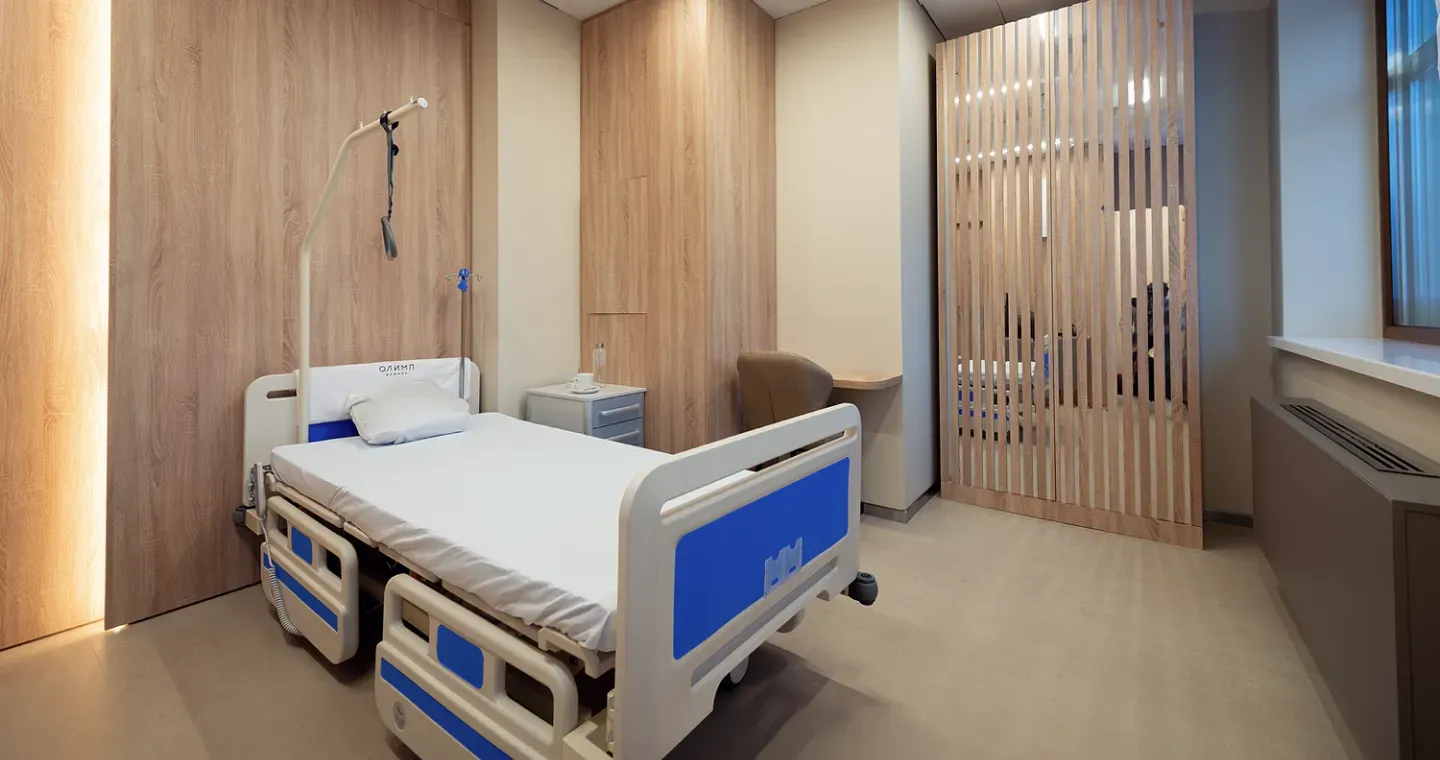Osteosynthesis of the bone of the wrist
The pathologies of the wrist joint are engaged in pathologies of the wrist joint. With damage to the bones, it will perform the osteosynthesis procedure.
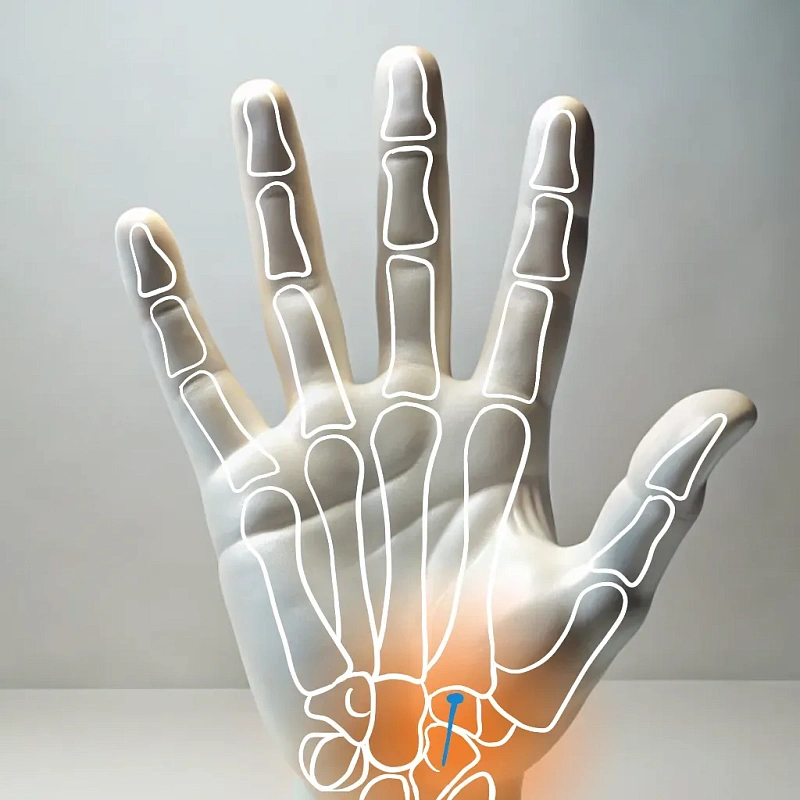
Moderate pain does not exclude a fracture, which can have unpleasant consequences. Osteosynthesis allows you to restore the integrity of the bone and ensure its proper fusion.
Clinical blood and urine tests Wrist X-ray MRI or CT scan for detailed diagnosis of fractures Consultation with a therapist and an anesthesiologist
The surgeon makes a small incision in the skin above the injury site to gain access to the wrist bone. Next, he fixes the bones with special implants such as plates, bolts or nails to stabilize and align the bone.
Metal plates and screws for fixing bones Surgical instruments for precise alignment of bone fragments X-ray equipment
After surgery, pain and swelling may appear in the area of the hand. The doctor will prescribe analgesics and possibly anti-inflammatory drugs. To restore mobility in the hand, a rehabilitologist may prescribe physiotherapy.
Benefits
Minimal invasiveness
Modern methods of osteosynthesis make it possible to make smaller incisions in the skin and minimize the traumatic nature of the operation.
Long-term results
After successful osteosynthesis, the wrist bones often fuse and retain their structure for a long time.
Safety
Experienced surgeons who use modern equipment.
Consultation
The doctor will conduct a detailed examination of your wrist and take X-rays to determine the nature and extent of the damage.
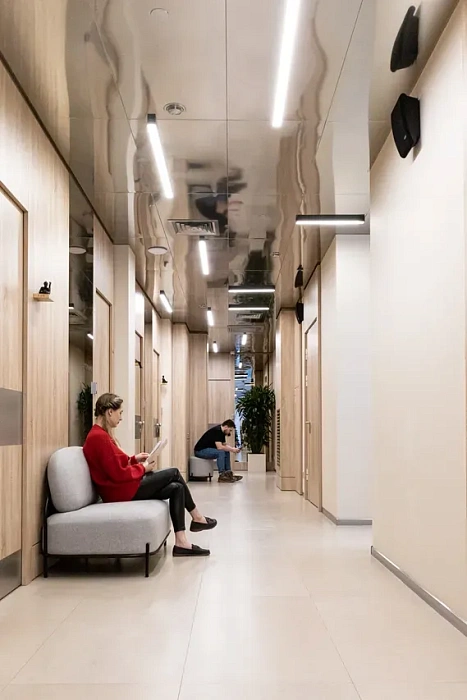
Operation
The surgeon makes an incision in the skin above the injury site to gain access to the wrist bone. Then special implants such as plates, bolts or nails are used to stabilize and align the bone.

Rehabilitation
After surgery, you may experience pain and swelling in the wrist area. The doctor will prescribe you analgesics and possibly anti-inflammatory drugs. You may be recommended physical therapy to restore mobility in your wrist.
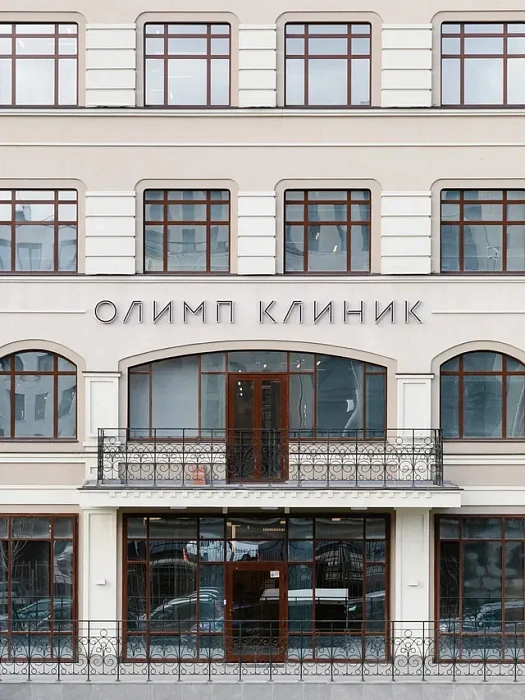
Frequently Asked Questions
What are the indications for osteosynthesis of the wrist bone?
How long does it take to recover from osteosynthesis?
Under what anesthesia is the operation performed?
Didn't find an answer to your question?
You can describe your problem in detail and ask a question to the doctor. He will answer you and help you find a solution
Specialists
Find a SpecialistCandidate of Medical Sciences. Orthopedic Trauma Surgeon. Deputy Chief of Surgery.
Candidate of Medical Sciences. Orthopedic Trauma Surgeon, Hand Surgeon. Head of the Hand Surgery and Microsurgery Department.
Orthopedic Trauma Surgeon
Orthopedic Trauma Surgeon, Hand Surgeon.
Orthopedic traumatologist for children
Indications and contraindications
Indications
The consequences of injuries
The consequences of injuries
Pain
The occurrence of unpleasant sensations associated with damage to the wrist
The instability of the cystic joint
Disharmonious functioning of the structures of the cystic joint
Expected effect
Restoring wrist function
Osteosynthesis allows you to restore the normal structure and function of the wrist bone after a fracture or injury. This can help the patient regain mobility, strength and sensitivity in the arm.
Reducing pain and discomfort
Bone fixation with implants helps to reduce pain and discomfort associated with a fracture or injury.
Preventing deformations
Osteosynthesis helps to prevent deformities and dislocations of bones.
Similar referral activities
Arthroscopy of the ankle joint
Ankle arthroscopy is a minimally invasive surgical procedure used to diagnose and treat various diseases and injuries of the ankle joint.
Arthroscopy of the ankle joint
Ankle arthroscopy is a minimally invasive surgical procedure used to diagnose and treat various diseases and injuries of the ankle joint.
Arthroscopy of the knee joint
Knee arthroscopy is a minimally invasive surgical procedure for the diagnosis and treatment of injuries and diseases of the knee joint. It allows examining the joint for damage and eliminating the identified defects.
Arthroscopy of the knee joint
Knee arthroscopy is a minimally invasive surgical procedure for the diagnosis and treatment of injuries and diseases of the knee joint. It allows examining the joint for damage and eliminating the identified defects.
Arthroscopy of the elbow joint
Arthroscopy of the elbow joint is a minimally invasive surgical intervention that allows for accurate diagnosis and simultaneous treatment of joint injuries.
Arthrodesis of the joints of the fingers of the hand
The destruction of the joints of the fingers of the hand is accompanied by pronounced pain and impaired functions. Arthrodesis is a surgical intervention in which the affected joint is completely immobilized, which relieves pain and progression of inflammation.
News & Media
All news and mediaHow to reach
How to get
From the Belorusskaya metro station of the Zamoskvoretskaya line - exit 4 After exiting the subway, walk through the pedestrian tunnel and climb the stairs. Move towards the railway tracks, go down the stairs immediately after them and walk along the house, then turn right onto 1st Yamskoye Pole Street. At the turn to 3rd Yamsky Pole Street, cross the road at the pedestrian crossing and continue along 1st Yamsky Field Street, after a few buildings on the left you will see Olympus Clinic MARS.
Travel time
9 minutes
Landmark
Olympus Clinic MARS sign
How to get
From the Belorusskaya metro station of the Ring line - exit 2. After exiting the subway, turn left and walk to the pedestrian crossing. Cross the road through two pedestrian crossings and move along the Tverskoy overpass. Go down the stairs immediately after the railway tracks, walk along the house, then turn right onto 1st Yamskoye Pole Street. At the turn to 3rd Yamsky Pole Street, cross the road at the pedestrian crossing and continue along 1st Yamsky Field Street, after a few buildings on the left you will see Olympus Clinic MARS
Travel time
11 minutes
Landmark
Olympus Clinic MARS sign
From the metro station "Tsvetnoy Bulvar"
1 exit to the city, then left to the Garden Ring, at the crossing to the right, crossing the boulevard, one more crossing and at the traffic light to the left. The Olymp Clinic building is located overlooking the Garden Ring to the right of the crossing. Travel time is approximately 9 minutes. Landmark - sign Olymp Clini
From the metro station "Sukharevskaya"
Exit 3 from the metro and 640 meters straight ahead, the clinic will be on the right. Landmark - sign Olymp Clinic
Parking lot map
Exit 3 from the metro and 640 meters straight ahead, the clinic will be on the right. Landmark - sign Olymp Clinic
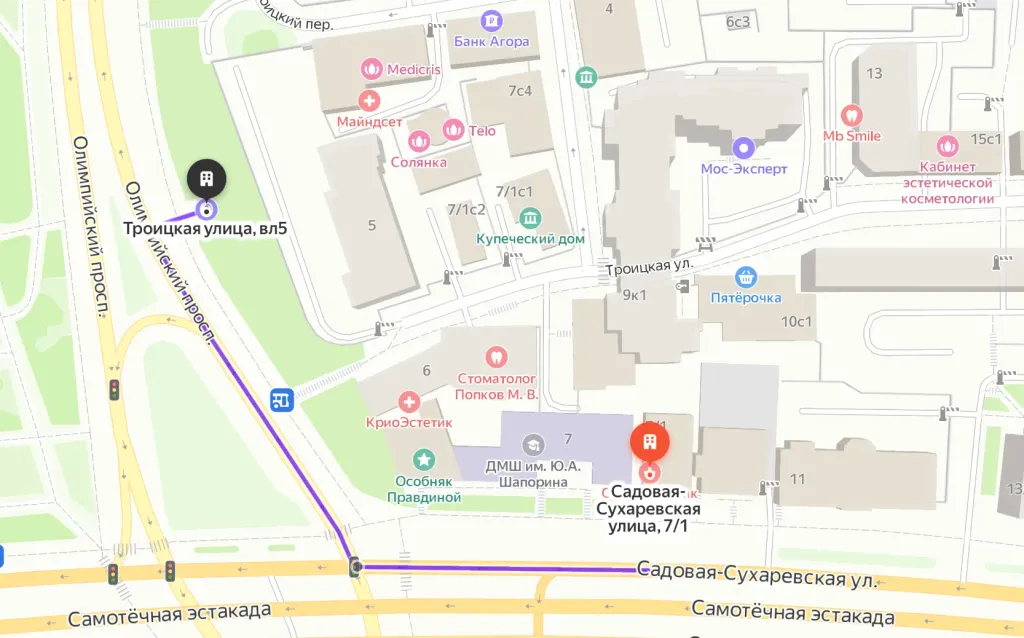
From Sokol metro station
The last car from the center: follow the signs for Exit 5. From the glass doors to the right and go to the end of the passage. Exit to the city by the steps to the left. After exiting the crossing to the street, go straight along Leningradsky Prospekt to the intersection with Chapaevsky Lane. Next, turn right (onto Chapaevsky Lane) and walk to the Triumph Palace residential complex. Entrance to the territory: through checkpoint No. 1, opposite the Vkusville store, you will need to present your passport. After passing through the checkpoint, go up the stairs to the fountain, opposite it you will see our clinic.
Travel time
10-12 minutes
From the Airport metro station
The first car from the center: follow the Exit 2-3 signs. Turn left out of the glass doors and walk to the end of the passage. After exiting the crossing to the street, go straight along Leningradsky Prospekt to the intersection with Chapaevsky Lane. Next, turn left (onto Chapaevsky Lane) and walk to the Triumph Palace residential complex. Entrance to the territory: through checkpoint No. 1, opposite the Vkusville store, you will need to present your passport. After passing through the checkpoint, go up the stairs to the fountain, opposite it you will see our clinic.
Travel time
12-15 minutes
How to get
Entry to the territory is prohibited, but there are free city parking lots around the Triumph Palace residential complex, where you can easily find a place for your car. Free parking area:






